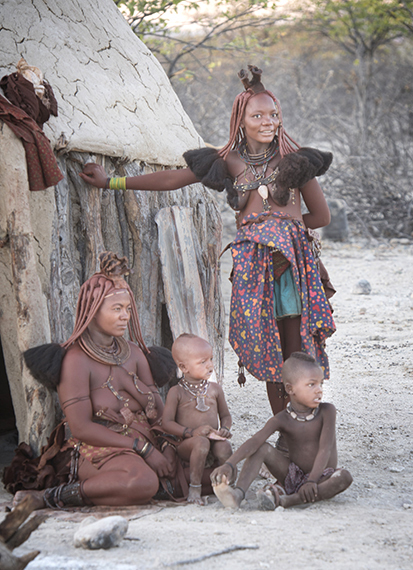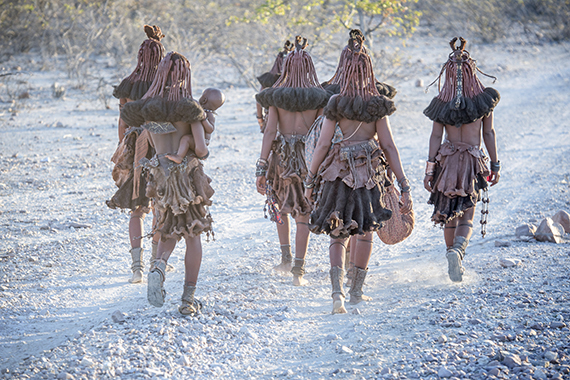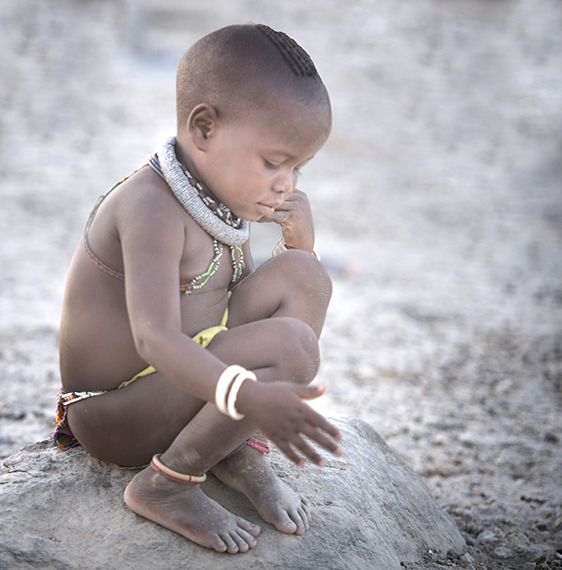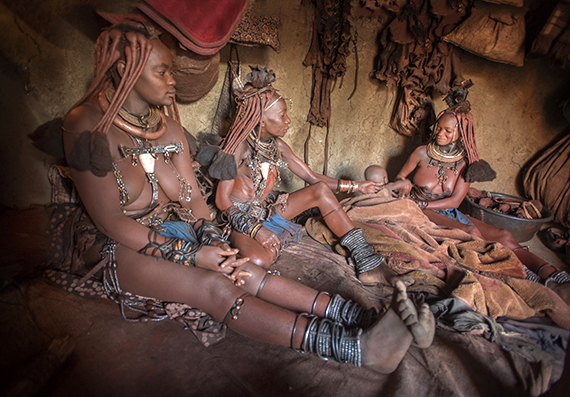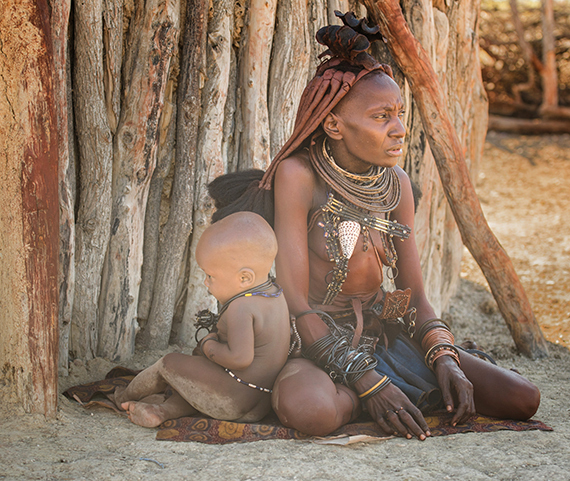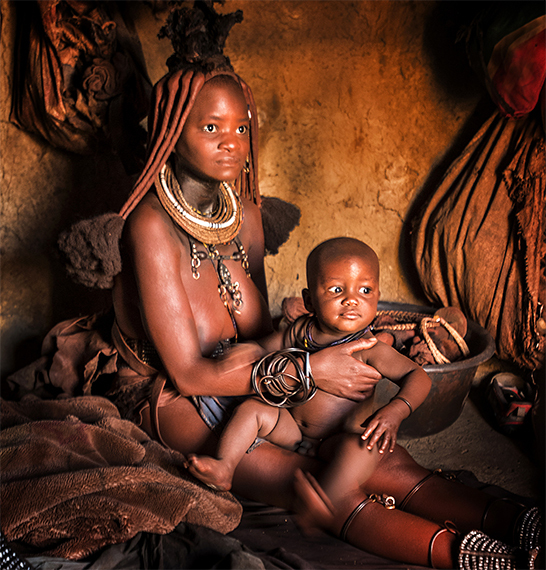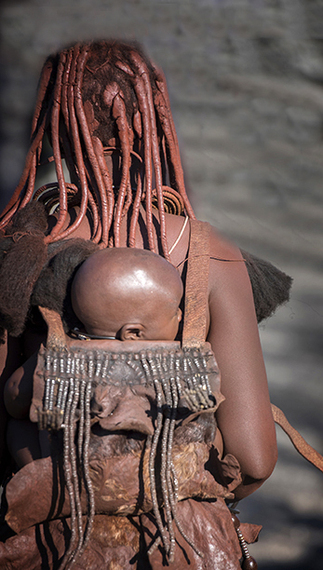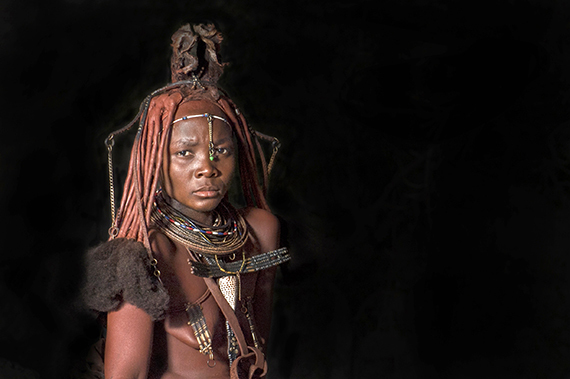I walked into the village feeling a bit uneasy about photographing its inhabitants. The camera can make those on the other end of my lens uncomfortable, self-conscious. That day I also felt uncomfortable, even apologetic. The camera can be a barrier to people connecting, its physical presence is an obstacle that can only be overcome by pulling the camera down from my face and getting to know the people I am photographing.
The people whose images I was taking that bright day in June have no electricity or cars. They sleep on dirt floors in circular huts that have walls made of dirt and manure. They continue to live as their ancestors have for hundreds, if not thousands, of years. This is the Himba tribe that live in villages along the Kunene River on the border between Namibia and Angola. The village I visited was in northern Namibia.
The Himba were expecting us. Our guide had informed them the previous day that we were coming. Our guide, Ben McRae, an Australian, spent years cultivating a special relationship with the Himba.
That afternoon I spent time watching the Himba children play and talking to some of the Himba men who spoke English. That evening I watched the Himba women dance and the men cook a goat. I was offered the opportunity to spend the night in the Himba village. Once I heard the night would be spent cuddling with other men to stay warm in the men's hut I graciously declined.
The next morning I spent a half hour talking with three Himba women through a translator. We sat in their cramped hut as they prepared themselves for the day. The sun was rising outside. A fire, just inside the door, filled the air with a layer of smoke and seemed to do little to warm the chill. I sat on the dirt floor with the ladies. My pant legs were inches from the flames and my eyes were watering a bit from the smoke.
In return for taking their pictures as we spoke they only asked that I show them the pictures I was taking of them. I took a picture and then turned the back of my camera to them so they could see their image in the LCD. On each occasion they said "ah, ah," as they looked. This meant, "yes, yes" in Himba.
The women told me they do all the village's work except herding the goats and cattle. That duty is left to the men and boys. The women haul the water over long distances, as well as build the huts, milk the goats, gather firewood, and care for the children. Each woman is allowed one husband but are permitted to have boyfriends with the blessing of their husband. They smiled when I asked about their boyfriends but would not say more. The men, on the other hand, are allowed multiple wives as long they have enough cows to pay the dowry to the bride's family.
The women told me how they make their skin a powdery bronze color twice a day. They grind a brown iron containing rock to make an ochre power. They then apply butterfat to their skin and rub the powder into the butterfat. The butterfat makes the powder cling to the skin. They apply the powder to all visible spots on the body. They also told me how they mold clay around their braided hair and make headdresses out of goat's skin. I asked them if there was anything in the world they wanted. They could not think of anything.
The Himba women asked me how many cattle I own.
Cattle to the Himba are like a bank account. The number of cattle you own is equivalent to your financial worth. I told them I had only a dog. They asked me how many wives I had. I told them just one. They smiled again and giggled then said, "You mean you work for only one wife and a dog?" I had to admit I did.
Centuries of progress have passed them by and they could not care less. I wondered if what we define as "progress" is merely dissatisfaction with the way things are and whether truly contented people are those that are not constantly asking for something more or something different. The Himba seem to be content with very little. They are lucky people.
After two days with the Himba I no longer felt like an interloper. I felt I had made a bit of a connection with the Himba as we got to know each other. I felt like we were friends.

Tjatungwa
Special thanks to Ben McRae and Morne. For those interested in reading about Ben McRae's experience with the Himba I recommend his book "Chasing Tjanongombe."
All photographs by Stephen Wallace, M.D., J.D.
